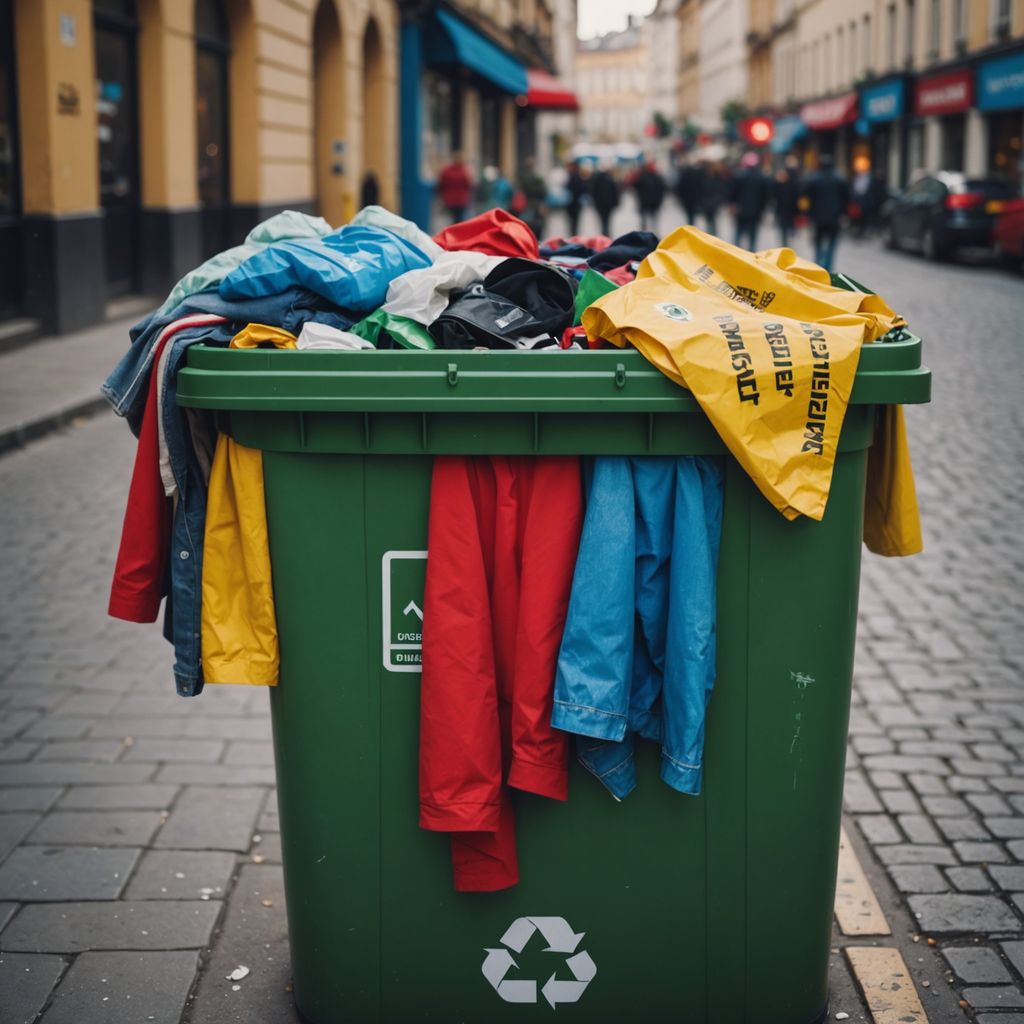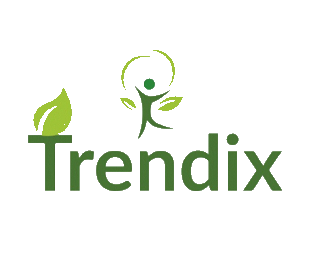
Clothing Not Trash: HELPSY's Textile Recycling Initiative
Share
Every year, Americans throw away millions of pounds of clothes, with most of it ending up in landfills. HELPSY aims to change this by recycling textiles, making sure clothes get a second life instead of becoming trash. By working with cities and towns, HELPSY is making a big impact on reducing waste and helping the environment.
Key Takeaways
- HELPSY works with over 100 towns to collect and recycle clothes.
- They keep nearly 30 million pounds of textiles out of landfills each year.
- Recycled clothes are either sold in thrift stores or turned into useful items like rags.
- HELPSY offers home pickups and has clothing bins in many places.
- Recycling clothes helps both the environment and the economy.
The Textile Waste Crisis in the United States

Statistics on Textile Waste
According to the U.S. Environmental Protection Agency, textile waste is the fastest growing waste stream in the United States. It occupies nearly 5% of all landfill space. Over 85% of clothes end up in the trash, which amounts to more than 100 pounds per person each year. Americans discard 30 billion pounds of clothes annually, with a potential worth of $10-$12 billion in bulk.
Environmental Impact of Textile Waste
The environmental impact of textile waste is significant. When textiles end up in landfills, they contribute to pollution and greenhouse gas emissions. The decomposition of textiles releases harmful chemicals into the soil and water. Recycling clothes can help mitigate these environmental issues by reducing the need for new raw materials and decreasing landfill waste.
Economic Implications of Textile Disposal
The economic implications of textile disposal are also noteworthy. The discarded textiles have a potential worth of billions of dollars. Recycling and reusing textiles can create economic opportunities, such as jobs in the recycling industry and revenue from the sale of second-hand clothing. Recycling clothes makes sense both environmentally and financially.
HELPSY's Mission and Vision

HELPSY is dedicated to changing the way people think about clothing recycling while adhering to the highest level of social and environmental performance, earning the company a Certified B Corporation designation. HELPSY’s mission is to keep clothes out of the trash, says Dan Green, Co-Founder and CEO of HELPSY. Over the past year, HELPSY has worked with 113 municipal recycling departments and collected approximately 1.7 million pounds of textiles from those collaborations. Through a combination of clothing drives, home pick-ups, thrift store partners and clothing receptacles located in 10 states, HELPSY diverts nearly 30 million pounds of textiles from landfills every year.
Collaborations with Municipalities

Partnership Models
HELPSY collaborates with municipalities through various partnership models. These models are designed to integrate textile recycling into local waste management systems. One key approach is setting up convenient drop-off locations throughout the city. Another model involves organizing community events to raise awareness about textile recycling.
Success Stories from Various Cities
Several cities have successfully partnered with HELPSY to reduce textile waste. For instance, in Medford, the collaboration led to a significant increase in textile recycling rates. The city saw a reduction in landfill waste and an increase in community engagement. Other cities have reported similar successes, showcasing the effectiveness of HELPSY's initiatives.
Future Plans for Municipal Collaborations
HELPSY aims to expand its reach by forming new partnerships with more municipalities. The goal is to create a network of cities committed to sustainable textile disposal. Future plans include developing innovative recycling techniques and increasing public participation in recycling programs. HELPSY's vision is to make textile recycling a standard practice in communities across the country.
HELPSY's Recycling Methods
HELPSY employs a variety of methods to ensure that textiles are kept out of landfills. Their efforts are crucial in scaling the mountains of textile waste in New York City and beyond.
Impact on Local Communities
HELPSY's textile recycling initiative brings significant economic benefits to local communities. By creating jobs in sorting, processing, and distributing recycled textiles, HELPSY helps stimulate local economies. Additionally, the resale of second-hand clothing generates revenue that can be reinvested into community projects. This cycle of reuse and reinvestment fosters economic resilience.
HELPSY is committed to educating the public about the importance of textile recycling. They organize workshops and seminars in schools and community centers to raise awareness about the environmental impact of textile waste. These educational initiatives empower individuals to make more sustainable choices in their daily lives. Knowledge dissemination is a key component of HELPSY's strategy to promote sustainability.
HELPSY actively engages with local communities through various programs. They collaborate with local organizations to host clothing drives and recycling events. These events not only help reduce textile waste but also bring communities together, fostering a sense of collective responsibility. The engagement programs are designed to be inclusive, ensuring that everyone has the opportunity to participate and contribute to a more sustainable future.
HELPSY for Retailers and Brands

Retailers partnering with HELPSY gain numerous advantages. One key benefit is the positive environmental impact, as it helps reduce textile waste. Additionally, retailers can enhance their brand image by showcasing their commitment to sustainability. This partnership also opens up new revenue streams through the resale of recycled textiles.
Several retailers have successfully collaborated with HELPSY. For instance, a well-known clothing brand saw a 20% increase in customer loyalty after joining HELPSY's recycling program. Another retailer reported a significant reduction in waste disposal costs, highlighting the economic benefits of such partnerships.
Retailers interested in joining HELPSY's initiative can follow a simple process:
- Contact HELPSY to express interest.
- Schedule a consultation to discuss specific needs and goals.
- Implement the recycling program in-store or online.
- Promote the partnership to customers to maximize engagement.
By following these steps, retailers can play a crucial role in promoting sustainability and reducing textile waste.
HELPSY's Role in the Circular Economy
Definition of Circular Economy
The circular economy is a system aimed at eliminating waste and the continual use of resources. It contrasts with the traditional linear economy, which follows a 'take, make, dispose' model. In a circular economy, products and materials are kept in use for as long as possible, extracting the maximum value before recovery and regeneration. This approach reduces the strain on natural resources and minimizes environmental impact.
HELPSY's Contribution to Circularity
HELPSY plays a crucial role in promoting the circular economy by ensuring that textiles are reused and recycled rather than discarded. They have established a network of clothing drives, home pick-ups, and thrift store partnerships to collect unwanted textiles. By diverting nearly 30 million pounds of textiles from landfills each year, HELPSY significantly reduces waste and promotes sustainability. Their efforts help to keep clothes in circulation, supporting the principles of the circular economy.
Future Prospects and Innovations
Looking ahead, HELPSY aims to expand its initiatives and explore innovative recycling techniques. They are committed to finding new ways to improve textile recycling processes and increase the amount of clothing diverted from landfills. Future plans include collaborating with more municipalities and retailers to enhance their recycling network. By continuously innovating and expanding their reach, HELPSY strives to make an even greater impact on the circular economy.
Conclusion
HELPSY's textile recycling initiative demonstrates that clothing waste does not have to end up in landfills. By partnering with municipalities, retailers, and communities, HELPSY has successfully diverted millions of pounds of textiles from the trash. Their efforts not only help the environment but also create economic opportunities and support local communities. As textile waste continues to grow, initiatives like HELPSY's are crucial for a sustainable future. By rethinking how we dispose of our clothes, we can all contribute to a cleaner, greener planet.
Frequently Asked Questions
What is HELPSY's main goal?
HELPSY aims to keep clothes out of the trash by recycling textiles and reducing waste.
How much textile waste do Americans produce annually?
Americans throw away 30 billion pounds of clothes every year, which is about 100 pounds per person.
How does HELPSY collect textiles?
HELPSY collects textiles through clothing drives, home pick-ups, thrift store partnerships, and recycling bins.
What happens to the collected clothes?
Collected clothes are either sold in thrift stores or recycled into items like wiper rags and fiberfill for furniture.
How does HELPSY benefit local communities?
HELPSY helps communities by reducing landfill waste, providing economic benefits, and engaging in educational initiatives.
How can retailers and brands get involved with HELPSY?
Retailers and brands can partner with HELPSY to recycle textiles, benefiting from the environmental and economic advantages.
